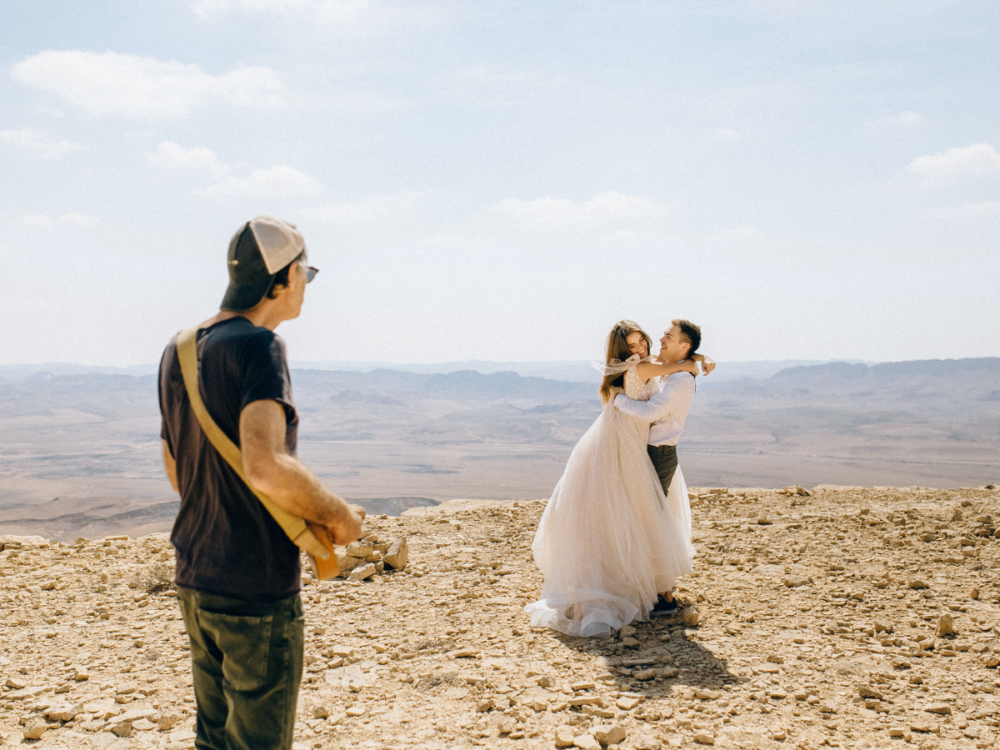Have you gone through the trouble of setting up an online presence for your photography business, but can’t move the needle on getting clients? It might be time to ask yourself the question: “Do I need help writing copy for my photography site?” Because the answer is probably a resounding ‘yes!’ Get ready for a whirlwind tour through the wonderful world of copywriting for photographers.
Good copy can be a subtle but powerful difference-maker. But you don’t need to be Shakespeare to get the job done. Nope — copy for photography website success is surprisingly simple!
Whether you’re a wedding photographer or a wildlife enthusiast, a well-written website and blog can help you capture new clients like a pro. With this guide, we’ll develop your photography writing skills like a perfectly exposed photograph. So, buckle up and keep your lenses on — it’s time to dive into the secrets of copywriting for photographers.
Lights, camera, action!
How To Write A Customer Persona: Know Your Audience!
You might be relieved to hear that the key to copywriting isn’t about writing at all. It’s all about knowing how to write a customer persona — nail this and the words will reveal themselves.
First things first: identify your target audience. Are you aiming to photograph weddings, events, or perhaps majestic landscapes? It doesn’t matter if it’s copywriting for wedding photographers or anything else, the principles are the same.
Once you know your market, create a customer persona to get a better understanding of who you’re talking to. This’ll help you tailor your content, making it more engaging and relatable for your audience. Any and all copywriting tips for photographers will rest on the strength of your customer persona, so make sure it’s sharper than a porcupine’s headshot.
A customer persona is a semi-fictional representation of your ideal client. It includes details such as demographics, interests, pain points, and goals. To create a customer persona, start by gathering data from your current and past clients. You can also use market research and social media insights to gather more information. Simply combine this data to create a comprehensive profile that represents your ideal client.
Remember, the more detailed your customer persona, the better. That way, you can create targeted content that speaks directly to your audience’s needs and desires, making your copywriting for photography miles more effective.

Copywriting for photographers rests on the strength of your customer persona. Image by Marek on Pexels.
Lights, Bio, Action: Crafting A Captivating Bio Page
Your bio page is where you reveal your passion and style, giving clients a glimpse of the artist behind the lens. Share your story, values, and what makes your photography unique. Don’t be shy – let your personality shine through to create a memorable impression.
When crafting your bio, think about what sets you apart from other photographers. Perhaps you have a unique approach to lighting or a distinct editing style. Whatever it is, make sure to highlight it in your bio.
Also, consider incorporating some personal anecdotes or experiences that have shaped your photography journey. This will help clients connect with you on a deeper level and make your bio more engaging.
A strong photographer bio example would include:
- Introduction: Your name and location.
- Specialisation: The type of photography you specialise in.
- Experience: How many years of experience you have in the field.
- Style and Approach: A brief description of your unique style and your approach to photography.
- Passion/Philosophy: Why you’re passionate about photography and your philosophy or mission.
- Notable Clients or Achievements: Any high-profile clients, awards, or recognitions you’ve received.
- Media Features: If your work has been published or featured in media outlets, let ’em know!
- Personal Touch: Something personal about you — a hobby, a fun fact, what you like in bed — wait, no, not that — or something else that gives a glimpse into who you are outside of work.
- Call to Action: An invitation for potential clients to reach out to you or book your services.
Each of these components helps create a well-rounded and engaging bio that tells your story, showcases your expertise, and connects with your audience.
Get Straight To The Point: Concise Copy And Clear CTAs
Whether it’s a webpage or a blog, aim for concise copy that communicates your message effectively. Don’t forget to include clear Call-to-Actions (CTAs) that guide your potential clients to take the next step, whether that’s booking a session or subscribing to your newsletter.
When writing your copy, focus on the most important information and cut out any unnecessary fluff. Be mindful of your audience’s attention span and avoid overwhelming them with too much stuffy text. SNOOOOOZE.

SEO copywriting for photographers is crucial to rank higher in search results. Image by Vlada Karpovich on Pexels.
Picture-Perfect Keywords: Mastering SEO Copywriting For Photography
SEO copywriting for photographers is crucial to rank higher in search results. Make sure to incorporate both long-tail and niche/localised keywords in your content. Check out our article on SEO keyword research for some helpful tips.
What keywords should I use for my photography website, you ask? Well, long-tail keywords are longer, more specific phrases that are less competitive and easier to rank for. Examples of long-tail keywords for photographers might include “wedding photographer in London” or “newborn photography studio in Manchester.” By targeting these specific phrases, you’ll have a better chance of reaching potential clients who are actively searching for your services.
On the other hand, niche or localised keywords are specific to your photography speciality or location. These might include terms like “destination wedding photographer” or “London event photography.” Incorporating these keywords into your content will help you reach clients in your specific niche or local area.
Some SEO keywords for wedding photographers in Sydney, for example, might include:
- Sydney photographer
- Professional photographer in Sydney
- Wedding photographer Sydney
- Sydney portrait photographer
- Commercial photography Sydney
- Sydney event photography
- Fine art photography Sydney
- Sydney family photographer
When implementing keywords into your copy, make sure to use them naturally and avoid keyword stuffing. Get these things right, and SEO copywriting for photography needn’t be any more complicated!
Focus On The Client: Crafting Client-Centred Content
The next question we’ll tackle is how do you write content for a photography website? While it’s tempting to talk all about your photography expertise, remember to focus the content on your clients. Speak to them directly, highlighting the benefits of working with you and what sets you apart from the competition.
To create client-centred content, think about the questions and concerns your clients might have. Address these in your copy, and demonstrate how your photography services can provide the solutions they’re seeking.
The Client Experience: Paint A Vivid Picture
Use your words to create a vivid picture of the experience clients can expect when working with you. Describe your process, the atmosphere you create, and the emotions they’ll feel when looking at your photos.
For example, if we’re talking about copywriting for wedding photographers, you might describe the excitement and joy of capturing a couple’s big day, and how your calming presence helps put them at ease. Paint a vivid picture of the client experience and you’ll create an emotional connection with potential clients, making them more likely to book your services.

Copywriting for wedding photographers: paint a vivid picture of the client experience. Image by Nataliya Vaitkevich on Pexels.
Package Details: Clearly Communicating What’s Included
To get your offer across effectively, you’ll need to deploy a few photographer copywriting tactics. Clearly outline your packages and what they include, emphasising the value clients will receive. Whether you decide to list pricing or not, make it easy for clients to understand what they’re getting.
Consider creating a separate page on your website dedicated to your packages. This page should provide a clear and concise breakdown of what’s included in each package, along with any additional services or options clients can choose from.
Also, make sure to emphasise the value clients will receive from your services, rather than simply listing the features. This will help clients see the benefits of working with you and make your packages more appealing.
Blogging For Success: The Art Of Photography Blogs
Photography blogs are the perfect place to showcase your expertise, add more content and keywords, and keep your site fresh. Regularly updating your blog can help improve your website’s visibility and attract new clients.
When creating content for your blog, consider the following ideas and topics:
- Behind-the-scenes stories: Share the stories and experiences from your photoshoots, giving clients a glimpse into your process and personality.
- Photography tips and tutorials: Share your knowledge and expertise by offering helpful tips and tutorials related to your photography niche.
- Client features: Showcase your favourite photos from recent sessions, along with a brief story about the client and their experience working with you.
- Industry news and trends: Stay up-to-date on the latest photography news and trends, and share your insights and opinions with your audience.
Wedding photography blogs also present the perfect opportunity to document the magical experience you’ve captured in an enticing fashion. Remember to optimise your blog posts for SEO by incorporating relevant keywords, creating engaging headlines, and using proper formatting to improve readability.
Consistency Is Key For Photography Website Content
Photography website writing needs to have a consistent tone of voice that reflects your brand’s personality. This helps create a sense of familiarity, making it easier for clients to connect with you.
To maintain a cohesive tone, consider creating a brand voice guide that outlines the key elements of your brand’s personality, along with specific writing guidelines and examples. This will make it easier for you to stay consistent across all your copy, from your photography website content to your blog posts and social media updates.
Leverage Photographer Testimonials: Let Your Happy Clients Do The Talking!
Last but not least, you’ll need to include your photographer testimonials on your website. Peer reviews can be incredibly persuasive, so let your satisfied clients sell your services for you.
Collect testimonials from past clients and ask for permission to feature them on your website. Consider creating a dedicated testimonials page, or incorporating quotes and reviews throughout your site to reinforce the value and quality of your services.
Remember to update your testimonials regularly to keep your content fresh and relevant.
Writing For Different Photography Niches
Adapting your copywriting for photography in different specialities is crucial for reaching the right clients. When deciding on content for your photography website, here are some examples of how you can tailor your copy to different niches:
- Wedding photography: Copywriting for wedding photographers can focus on capturing the love, joy, and emotions of a couple’s special day. Share stories of past weddings you’ve photographed, and highlight your expertise in capturing candid moments and beautiful portraits.
- Portrait photography: Emphasise your ability to make clients feel comfortable and confident in front of the camera. Share tips for preparing for a portrait session and showcase your diverse portfolio of individuals and families.
- Event photography: Highlight your experience capturing events of all sizes and types, from corporate functions to intimate gatherings. Discuss your ability to blend into the background and unobtrusively document the event’s most memorable moments.
- Commercial photography: Showcase your expertise in creating eye-catching images for advertising and marketing purposes. Discuss your understanding of visual storytelling and your ability to convey a brand’s message through compelling photography.
- Fine art photography: Share your artistic vision and the inspiration behind your work. Discuss your creative process, techniques, and the themes that permeate your photography.

Adapting your copywriting for photography in different specialities is crucial for reaching the right clients. Image by Brett Sayles on Pexels.
Social Media: Engaging Your Audience And Showcasing Your Work
Social media platforms are invaluable tools for photographers looking to engage with their audience and showcase their work. Use platforms like Instagram, Facebook, and Pinterest to share your images, interact with followers, and attract new clients. Copywriting for wedding photography, for example, can take advantage of these outlets to make their words go the distance.
To create engaging social media content, consider sharing behind-the-scenes stories, sneak peeks of upcoming projects, and personal insights into your photography journey. Also, use relevant hashtags and location tags to increase your visibility and reach a wider audience.
Make sure to regularly update your social media accounts and respond to comments and messages from your followers. This will help you build a loyal community and strengthen your online presence.
Getting Social: Going Beyond Words Online
When it comes to social media, it’s not just about posting your work, it’s about engaging with your audience and creating a community. Copywriting for photography is a powerful medium of communication, but you’ll also need to consider where that copy is going to be read, and what other effective channels you could leverage to engage with your audience:
- Instagram: As a visual platform, Instagram is perfect for photographers. Use Instagram Stories to share behind-the-scenes content, and IGTV for longer video content, like tutorials or in-depth looks at your shoots.
- Facebook: Utilise Facebook to share blog updates, client testimonials, and to engage with your audience through comments.
- Pinterest: Ideal for wedding and event photographers, Pinterest can help you reach clients planning these events. Create boards showcasing your work and ideas related to your photography niche.
- LinkedIn: Especially important for commercial photographers, LinkedIn can help you connect with businesses looking for your services. Share your latest projects, industry news, and professional achievements.
Optimising Images For SEO: A Picture’s Worth A Thousand Clicks
Beyond writing, there’s another crucial aspect of SEO that photographers shouldn’t overlook – image optimisation. Properly optimised images can significantly improve your website’s SEO, helping it rank higher in search results.
Here are a few quick tips to optimise your images for SEO:
- Use descriptive file names: Instead of using the default file name, rename your images with descriptive keywords that reflect their content.
- Add alt text: Alt text is a brief description of an image that search engines use to understand its content. Make sure to include relevant keywords in your alt text.
- Compress your images: Large image files can slow down your website, which can negatively impact your SEO. Use an image compression tool to reduce the file size without compromising on quality.
Email Marketing For Photographers: Connecting With Clients And Growing Your Business
Email marketing is an effective way for photographers to stay connected with their clients and promote their services. By creating compelling email content, you can keep your audience informed about upcoming promotions, events, and new blog posts. If you’re copywriting for wedding photography, email can be a highly-effective funnel for targeting couples that are beginning to consider your service with their big day on the horizon.
To craft successful email marketing campaigns, consider the following tips:
- Write engaging subject lines that encourage recipients to open your emails
- Keep your content concise and focused on your main message
- Use images to showcase your work and enhance your email’s visual appeal
- Include clear CTAs that guide readers to take the desired action
- Make sure to segment your email list based on factors like client type, engagement, and past purchases. This will allow you to send targeted content that resonates with your audience and increases the effectiveness of your campaigns.
Power Up Your Photography Biz With Pepperstorm
And that’s a wrap! With this complete guide to copywriting for photographers, you’re now ready to create engaging and client-centred content that helps you stand out in the crowded photography market. By implementing the tips and strategies provided, you’ll be well on your way to capturing the attention of potential clients and growing your photography business. So, grab your camera and your keyboard, and start snapping up clients like the photography rockstar you are!
But — if you’d rather focus on doing what you do best, you’re in luck. Pepperstorm’s specialty is handling the avalanche of information above so you can crack on with snapping pics and pleasing clients ($$$).
And today we’re happy to introduce the Pepper Club, a membership that will ensure you have spotless website copy written with your brand voice AND your SEO working full throttle for an entire year! Join the spiciest club and we’ll get your copywriting and photography marketing hemmed up like a sewing machine and much more.
Smash the competition and take your business to a whole other stratosphere with the Pepper Club!





